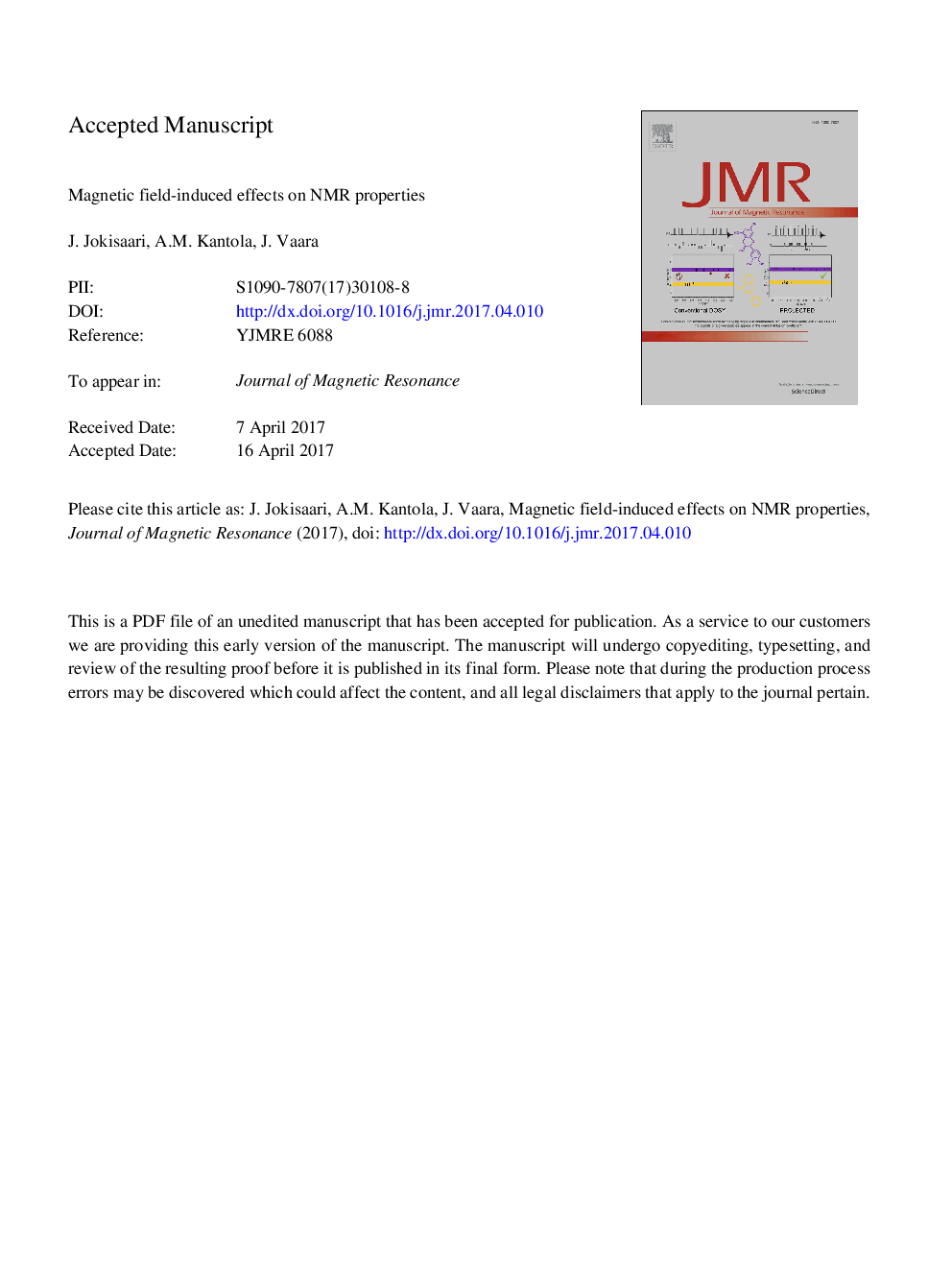| Article ID | Journal | Published Year | Pages | File Type |
|---|---|---|---|---|
| 5404442 | Journal of Magnetic Resonance | 2017 | 20 Pages |
Abstract
In principle, all the NMR observables, spin-spin coupling J, nuclear shielding Ï and quadrupole coupling q, are magnetic field-dependent. The field dependence may be classified into two categories: direct and indirect (apparent) dependence. The former arises from the magnetic field-induced deformation of the molecular electronic cloud, while the latter stems from a slightly anisotropic orientation distribution of molecules, due to the interaction between the anisotropy of the molecular susceptibility tensor and the external magnetic field. Here we use 1,3,5-D3-benzene as a model system to investigate the indirect effect on the one-bond 1H-13C and 2H-13C spin-spin couplings (J couplings) and the 2H quadrupole coupling. Experiments carried out at four magnetic fields (4.7, 9.4, 14.1, and 18.8Â T) show that the indirect effect is significant already at the magnetic fields commonly used in NMR spectrometers. A joint fit of the data extracted at the different field strengths provides experimental results for the susceptibility anisotropy, 2H quadrupole coupling constant and the related asymmetry parameter, as well as the one-bond CH and CD coupling constants extrapolated to vanishing field strength. The field-induced contributions are found to exceed the commonly assumed error margins of the latter. The data also indicate a primary isotope effect on the one-bond CH coupling constant. There is a tendency to further increase the magnetic field of NMR spectrometers, which leads to more pronounced indirect contributions and eventually significant direct effects as well.
Related Topics
Physical Sciences and Engineering
Chemistry
Physical and Theoretical Chemistry
Authors
J. Jokisaari, A.M. Kantola, J. Vaara,
